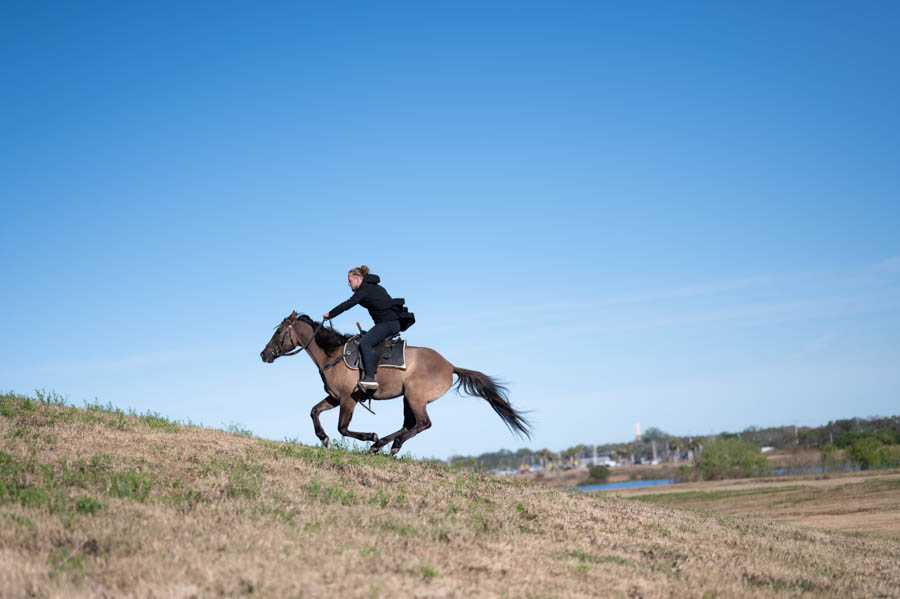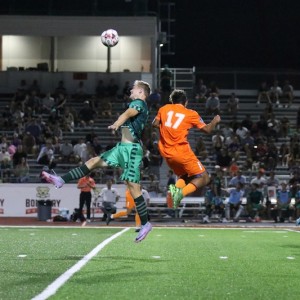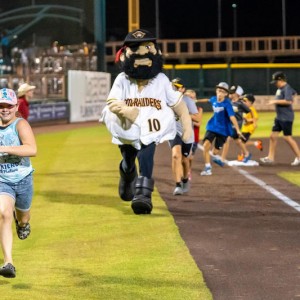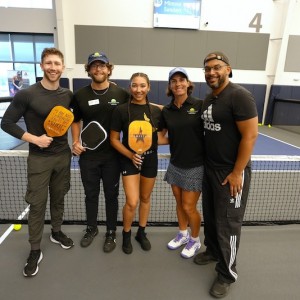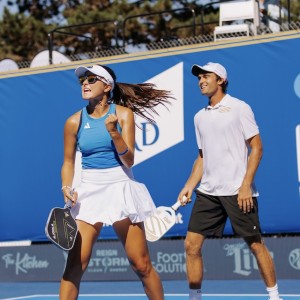Of all the horseback riders in Sarasota, one stands alone. He is both a relic and a young man — a living, breathing piece of history, a remnant of the city’s past as a circus town. Time cannot contain him, however, and through the vigor of his riding he ushers the past into the future. It takes a lot, however, to be that bridge between eras. It takes your childhood, your chance at living a ‘normal’ life. It takes your body, subjecting you to years of hard falls, broken bones, and bruised skin. Most of all, perhaps, it takes your mind — it requires a willingness to trick your brain into doing the impossible, over and over again. Ermes Zamperla is a 7th generation circus bareback rider, a member of one of the only families in the world to uphold this tradition of riding. He has been performing since the age of six, touring the world and sharing with all the oldest form of circus. Looking back on a memory that still makes him laugh, Ermes recalls a show in the Montreal-area when with the Tarzan Zerbini Circus as a young child. His role was to pose as a member of the audience before running into the circus ring just as his brother Gino finished his act with the ponies. “I remember going to run into the ring then being grabbed by this big French-Canadian security guard. Since he didn’t speak English, someone had to tell him that I was a part of the show. I thought that I was in so much trouble.” Now nearing 30, Ermes has accumulated a wealth of experience including touring with the Ringling Bros. and working as a stuntman and horse wrangler for AMC’s hit zombie apocalypse series, The Walking Dead.
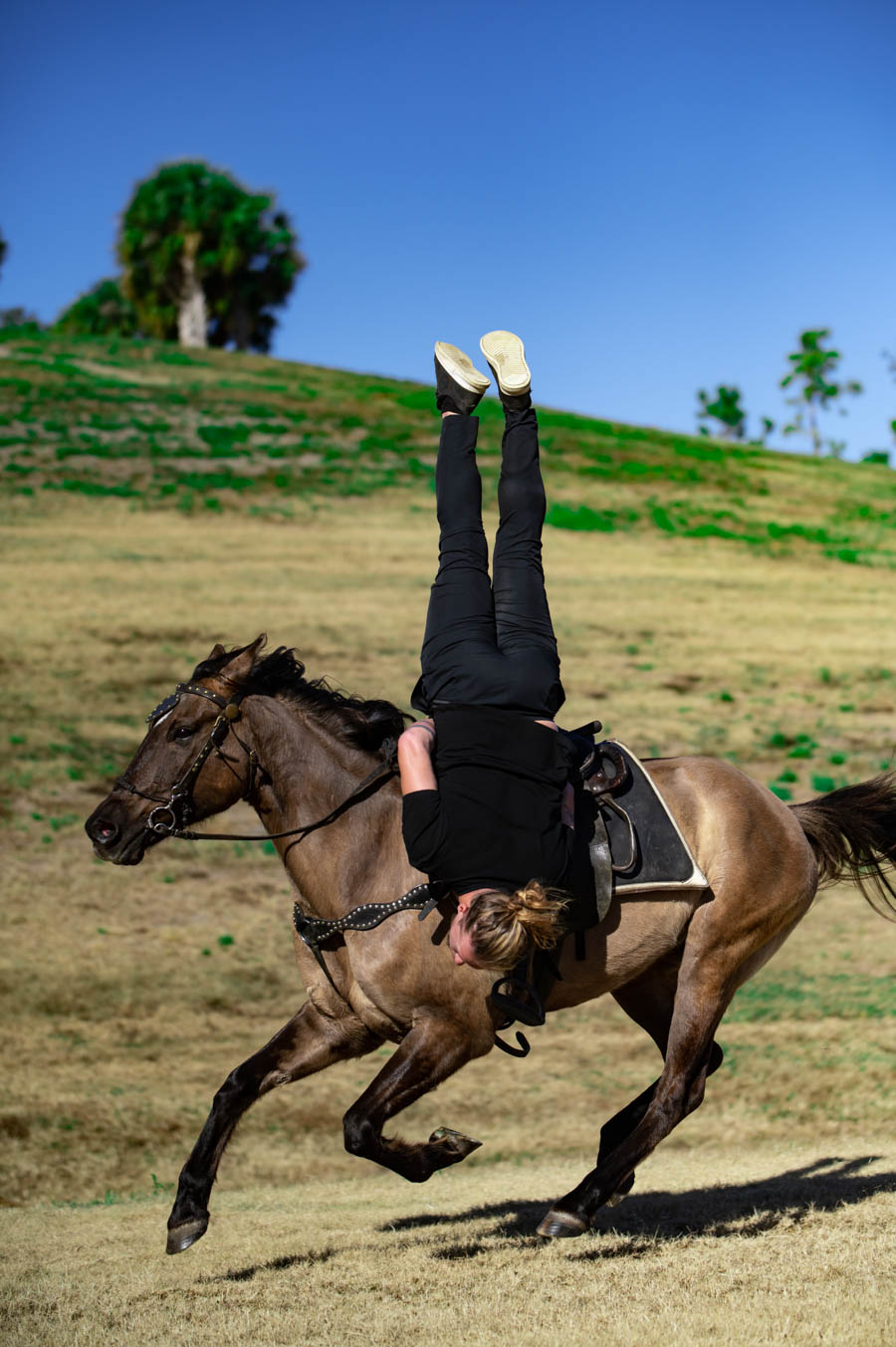
ERMES DEFIES GRAVITY FROM ATOP HIS HORSE, MURDOCK, A GRULLA-COLORED AMERICAN QUARTER HORSE CROSS
Ermes’ family and their heritage of riding hail from Italy, where the style of circus bareback riding originated. Back in the golden days of the circus, the Zamperla name was synonymous with bareback riding. “ We’re definitely the last of a dying breed in terms of standing on horses’ backs, in the United States we’re the last family that does it. Even in Europe there’s not a lot of people that do it.” Because of the immense difficulty of the craft, many other families have abandoned the tradition. It is a skill that has taken Ermes, the youngest of four brothers, a lifetime to master. “Ever since I can remember we were touring, training horses, and moving around. As a child, it was very difficult to keep friends and make new friends, when you’re traveling across Europe or South America for eight months out of the year.” When on tour, Ermes’ work ranges from horse expositions to Renaissance festivals and of course, circuses. While all that he does falls under the blanket term of Equestrian Circus riding, his craft includes distinct styles with differing heritages. In Renaissance festivals, Ermes will often take part in both Jousting and Roman Riding — an act where he stands atop two horses at once. At horse expositions and circuses, Ermes will unveil his expertise in circus bareback riding and Cossack riding, two distinct forms of trick riding. Circus bareback riding entails performing flips and acrobatics from atop the horse. Cossack riding — a discipline that originates from the Russian Cavalry and is the basis of modern-day, competitive vaulting — features a special saddle that allows Ermes to perform tricks at high speeds. Such tricks include ‘under the belly’ where from atop the saddle Ermes will clamber underneath the horse and back up the other side. “It just requires so much out of both the horse and the human — you have to be an acrobat on top of having a real connection with the horses,” says Ermes. Sounds dangerous? That’s because it is.
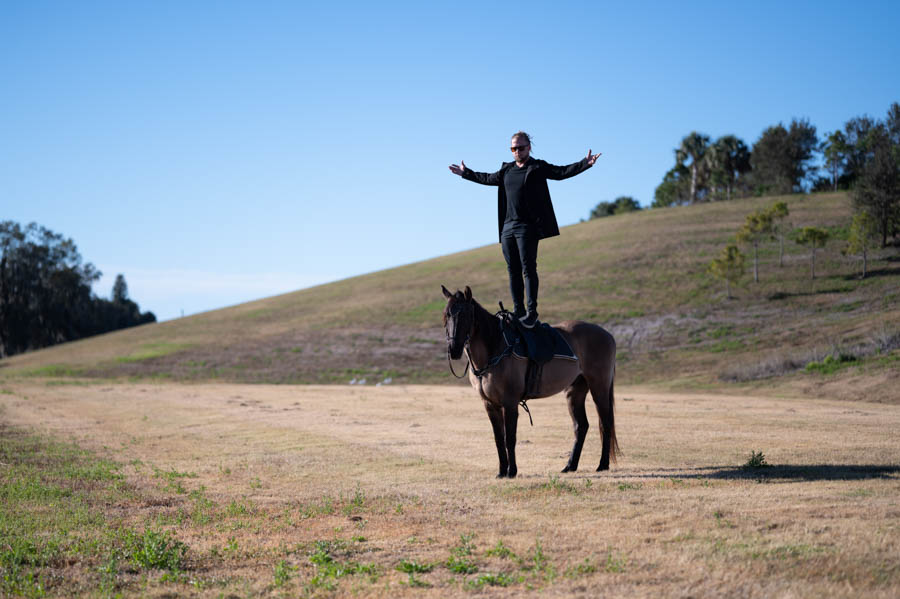
“I love the speed, the danger, and how much you have to believe in yourself to accomplish these stunts. It doesn’t matter if you’ve done it a thousand times, every show is different. Every audience is different. I can feel that fear before I go into the ring, but as soon as the curtain opens, all of it goes away. There’s just complete silence.” The ability to conquer that fear, however, is what pushes Ermes to put his body on the line time and time again. That doesn’t mean that the adrenaline rush comes without a cost. Ermes recounts a particular stretch of shows he did at a large arena in Toronto, where his horse Murdock, a grulla-colored American Quarter Horse Cross that stands at 15’2 hands tall, had the chance to build up an unusual amount of speed while Ermes was performing ‘under the belly’. “Because the arena was so big, Murdock could really reach with his legs and build up more speed than usual. At the end of each show, my sides would be black and blue from him reaching and hitting me with the back of his legs. That’s why I would say I didn’t perform in seven shows, I ‘survived’ seven shows.”
For Ermes, whose stable includes Murdock, now 16 years old, along with a trio of other horses, the amount of trust between horse and rider necessary to perform death-defying stunts in front of a sold-out arena far exceeds the parameters of the typical horse-owner relationship. It’s more like the bond between fighter jet pilot and co-pilot or rally car driver and navigator — a partnership forged in danger in the pursuit of glory. Their partnership is indicative of the special relationship that many in the circus and performing arts community have with their animals. By cultivating an understanding of his connection with Murdock, Ermes hopes to dispel the negative connotations the outside world often has of people who work with animals. “We’ll communicate through a look that he gives me before we go into a trick. If I fall, he stops. If I’m under the weather, he takes care of me. I’ve been through so much with Murdock, from flying him around the world to performing for hundreds of crowds, that our relationship is indescribable. We have an incredible amount of trust in each other and a level of connection that most people can’t comprehend.” says Ermes. For Ermes and Murdock, however, that bond wasn’t built overnight. “I don’t think that he’d had very good experiences before he came into my hands — sometimes I wasn’t sure if I’d get Dr. Jekyll or Mr. Hyde,” says Ermes. “It took awhile for us to trust one another, but he kept on trying for me. It took three years, but eventually he became my best horse.”
When not on tour, Ermes helps others train and work with problem horses. One horse, a wild California Mustang, who had landed two people in the hospital, left a particular mark on him. “After a couple of weeks, I thought I had made really good progress, but when I was cantering him in front of his owner he bucked me clean off his back. A week later, his owner called and told me that her husband had gotten hurt at work and they couldn’t afford to keep him any more — I was faced with the choice of taking the horse or seeing him go to the slaughter pound.”
Unable to live with that blood on his hands, Ermes adopted the horse and named him Agi — short for Agrius which means ‘wild’ in Greek. Because Ermes’ stable is so talented, he was able to take his time training Agi. After two years, Agi became disciplined enough to perform in shows with Ermes. Agi was never destined for a life in the circus ring, however, and has been gifted to Ermes’ girlfriend Amanda, who is giving Agi a future as a vaulting horse.
That same love for horses also now inspired Ermes to prepare the next generation of riders locally through a circus bareback riding clinic at Rosaire’s Riding Academy this past January to engender interest in the discipline and instill confidence.The single-day clinic was open to riders of all skill levels ages eight and up. The motivation for it came last summer while Ermes, sidelined with an ACL tear, was helping out Ellian Rosaire at the Academy’s summer camp.
“I see so many kids shut down when they get in uncomfortable positions with a horse. I told Ellian that I just wanted to help these kids gain more confidence and not to be such a victim to their own ride.” The objective of the clinic was never to create the world’s best trick rider — that, as seen in Ermes, takes a lifetime of lessons. “I want kids to understand how to be the aggressor and not the victim when they get into an uncomfortable position. How to not give up when your horse is having issues or gets afraid of something. How to not panic when faced with a sticky situation. Circus bareback and stunt riding are all about having tremendous amounts of determination and self belief. By learning about it, I hoped to instill those same values in these young riders.”
For all that Ermes’ work takes — the time spent on the road, his chance at a normal childhood and the wear on his body—it gives him more in return. It gives him peace. It gives him purpose. Most importantly, it gives him a path—one different from the rest of the world, paving the way for anyone daring enough to follow.





